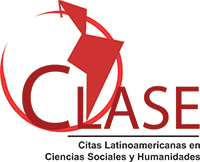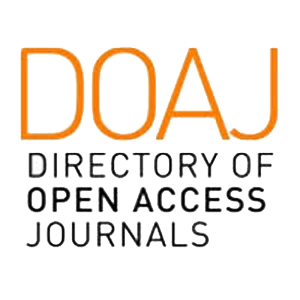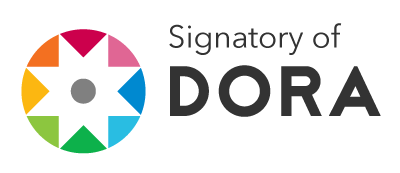COFFEE PRODUCTION IN MEXICO: AN APPROACH THROUGH FOOD REGIMES
Abstract
Distinctive food regimes have evolved as from the end of 19th century. This scheme has
been originally propounded by Friedmann and McMichael. The present article resorts
to this conceptualization in order to examine the evolution of coffee focusing in Mexico.
The first regime goes back to 1870. Due to foreign demand alongside the expansion of
railroads, this perennial crop spread out in areas which at present persist. A second food
regime starting around 1950, witness public institutions encouraging output expansion
alongside market regulation. In the international scene, coffee producers and importing
countries set up coffee agreements towards price stabilization. During the third food
regime, established during the 1980s, a return to unrestrained market forces takes
place. Local marketing agencies disappear, while multilateral agreements break down.
In Mexico, the current institutional environment continues to prove unsuccessful to
pull out this sector from its doldrums. Through organic coffee and fair trade, a fraction
of producers has managed to differentiate their product. Beyond each food regime,
common features of coffee production are identified. Small and isolated producers
placed vis-a-vis a contingent of middlemen on behalf of local enterprises, exporting
companies or importers themselves, managing the whole chain, predominates. Largeindirect taxes throughout the import chain and periods of currency overvaluation by
exporting countries continue to take place.
Downloads
References
Ayala Espinoza, J.L. (2023). Objetivos y Resultado. Programa Operativo Sistema
Producto Agrícolas en México. México: sagarpa and ii ca. <https://apps.iica.int/
DashboardProyectos/programas/Detalle?CRON=5173&SCRON=00>.
Cabral, R. (1980). Industrialización y Política Económica. In Cordera, R. (ed.) Desarrollo
y crisis de la economía mexicana. Ensayos de interpretación histórica. México: Fondo
de Cultura Económica.
Calo, M., and Wise, T.A. (2005). Revaluing Peasant Coffee Production: Organic
and Fair Trade Markets in Mexico. Global Development and Environment Institute.
Medford: Tufts University. <https://www.researchgate.net/publication/24214
_Revaluing_Peasant_Coffee_Production_Organic_and_Fair_Trade_
Markets_in_Mexico>.
Cámara de Diputados (2001). Ley de Desarrollo Rural Sustentable. México: Cámara
de Diputados. Last modification: June 3, 2021. <https://www.diputados.gob.
mx/LeyesBiblio/pdf/235_030621.pdf>.
Cardero, E., Mántey, G. y Mendoza. M.A. (2006). What is Wrong with Economic
Liberalization? The Mexican Case. Investigación Económica, 65(257), 19-43.
www.scielo.org.mx/pdf/ineco/v65n257/0185-1667-ineco-65-257-00019.pdf>.
cedrssa (2018). El café en México. Diagnóstico y perspectiva. México: Centro de Estudios
para el Desarrollo Rural Sustentable y la Soberanía Alimentaria.
Chort, I., and Öktem, B. (2022). Agricultural Shocks, Coping Policies and Deforestation:
Evidence from the Coffee Leaf Rust Epidemic in Mexico. SSRN. doi:
2139/ssrn.4216641.
Coatsworth, J. H. (1979). Indispensable Roads in a Backward Economy: The Case
of Mexico. The Journal of Economic History, 39(4), 939-960. <https://www.jstor.
org/stable/2120337>.
Corbo, V., and Fisher, S. (1995). Structural Adjustment, Stabilization and Policy
Reform: Domestic and International Finance (Chapter 44). Handbook of Development
Economics, vol. 3, Part B, 2845-2924.
Cordera, M. A. (1957). Comisión Nacional del Café, Organización y funcionamiento.
Revista de Administración Pública. 5, 49-53. <https://revistas-colaboracion.juridicas.
unam.mx/index.php/rev-administracion-publica/article/view/17645/15851>.
Cruz León, A., and Díaz Cárdenas, S. (2009). Matías Romero, un promotor del cultivo
del café en el México del siglo xix . Revista de Geografía Agrícola, 43, 103-108.
<https://www.redalyc.org/pdf/757/75715608008.pdf>.
Cuevas Reyes, V., Baca del Moral, J., and Aguilar Ávila, J. (2011). El concepto de sistema
producto como eje de las políticas agropecuarias en México. Revista Textual, 58,
-93. <https://www.researchgate.net/publication/301292496_El_concepto_
de_Sistema_Producto_como_eje_de_las_politicas_agropecuarias_en_Mexico>
Davis, S. J. (1946). Experience Under Intergovernmental Commodity Agreements,
-45. Journal of Political Economy, 54(3), 193-220. <https://www.jstor.org/
stable/1825086>.
DeAngelis, A. M. (2004). Coffee, Mexico’s other Bean: An Examination of the
Globalization of the Coffee Industry, its Impact on Mexican Villages, and the
Possibility of Surviving the Grind. Washington University Global Studies Law
Review, 3(3), 887-907. <https://openscholarship.wustl.edu/cgi/viewcontent.
cgi?referer=&httpsredir=1&article=1261&context=law_globalstudies>.
Dutton, L. M. (1992). Cochineal: A Bright Red Animal Dye (Master of Science Thesis).
Baylor University, Waco. <https://www.cochineal.info/>.
El Colegio de México (1960). Estadísticas económicas del Porfiriato. Comercio exterior
de México 1877-1911. México: El Colegio de México.
Engler, Y. (2015). Canada in Africa. 300 Years of Aid and Exploitation. Winnipeg: Fernwood.
faostat (undated). <https://www.fao.org/faostat/en/#data>.
Federación Nacional de Cafeteros de Colombia (undated). Estadísticas cafeteras.
<https://federaciondecafeteros.org/estadisticas-cafeteras/>.
Fitter, R., and Kaplisnky, R. (2001). Who Gains from Coffee Rents as the Coffee Market
Becomes More Differentiated? A Value Chain Analysis. ids Bulletin 32(3), 69-82.
<https://bulletin.ids.ac.uk/index.php/idsbo/article/view/1254>.
Flores Anaya, Y. Z., Solórzano Rodríguez, D. M., Ravina-Ripoll, R., and Galván-Vela,
E. (2022). Organic Coffee Growing as a Competitive Strategy for Mexico in
International Trade. Coffee Science, 17, e172005. doi: 10.25186/.v17i.2005.
Flores, D. and Harrison, T. (2016). Mexico Launches New Policies as Rust Continues
to Impact Production. Global Agricultural Information Network. Washington: U.S.
Department of Agriculture Foreign Agricultural Service. <https://apps.fas.usda.
gov/newgainapi/api/report/downloadreportbyfilename?filename=Coffee%20
Annual_Mexico%20City_Mexico_5-13-2016.pdf>.
Friedmann, H. (1978). World Market, State and Family Farm: Social Bases of Household
Production in an Era of Wage Labour. Comparative Studies in Society and
History, 20(4), 545-586.
Friedmann, H. (1991a). Changes in the International Division of Labor: Agri-food
Complexes and Export Agriculture. In W. Friedland, L. Busch, F. Buttel, and A.
Rudy (eds.), Towards a New Political Economy of Agriculture (pp. 65-93). Boulder,
Colorado: Westview Press.
Friedmann, H. (1991b). New Wines, New Bottles: the Regulation of Capital on a World
Scale. Studies in Political Economy, 36(1), 9-42. doi: 10.1080/19187033.1991.11675442.
Friedmann, H. (1993). The Political Economy of Food: a Global Crisis. New Left Review,
, 29-57. <https://www.wphna.org/htdocs/downloadsmay2012/Harriet%20
Friedman%20The%20Political%20Economy%20of%20Food%20pdf.pdf>.
Friedmann, H., and McMichael, P. (1989). Agriculture and the State System: The
Rise and Fall of National Agricultures, 1870 to the Present. Sociologia Ruralis,
(2), 93-117.
Gaceta del Senado. (2005). Proyecto de decreto por el que se expide la Ley de Desarrollo
Integral y Sustentable de la Cafeticultura. México: Senado de la República. Marzo
<https://www.senado.gob.mx/65/gaceta_del_senado/documento/4235>.
Gerber, J. (2019). A Great Deal of Ruin: Financial Crises since 1929. Cambridge: Cambridge
University Press. doi: 10.1017/9781108608589.005.
Hardy, O. (1934). The Revolution and the Railroads of Mexico. Pacific Historical Review,
(3), 249-269. doi: 10.2307/3633706.
iaca (1941). Inter-American Coffee Agreement. The American Journal of International
Law, Supplement: Official Documents, 35(3), 160-171. doi: 10.2307/2213495.
ico (undated). Exports of all Forms of Coffee by all Exporting Countries. London: International
Coffee Organization. <https://icocoffee.org/resources/historical-data-
on-the-global-coffee-trade/Available at www.ico.org>.
inegi (undated). Índice Nacional de Precios al Productor. Aguascalientes: Instituto
Nacional de Geografía y Estadística. <https://www.inegi.org.mx/temas/ negi.
org.mx/app/indicesdeprecios/Estructura.aspx?idEstructura=112001500010&ST=
Producción%20total,%20según%20actividad%20económica%20de%20
origen%20SCIAN%202013>.
Jaramillo Cárdenas, G., Vedenov, D., Houston, J. E. (2005). Analysis of Production
Efficiency of Mexican Coffee-Producing Districts. aaea Annual Meetings, Selected
Paper #134280 Providence. doi: 10.22004/ag.econ.19470.
Kaminsky, G.L. and Pereira, A. (1994). The Debt Crises: Lessons of the 1980s for the
s. International Finance Discussion Papers 481. Washington: Board of Governors
of the Federal Reserve System. September. <https://www.federalreserve.gov/
pubs/ifdp/1994/481/ifdp481.pdf>.
Lee, J. (2010). Global Commodity Chains and Global Value Chains. In R.A. Denemark.
(ed.), The International Studies Encyclopedia (pp. 2987-3006). Hoboken:
Wiley-Blackwell. <https://www.researchgate.net/publication/237784248_Global_
Commodity_Chains_and_Global_Value_Chains>
López Pacheco, E. (2017). Pioneros en la exportación de café orgánico bajo un Modelo
de Comercio Justo Unión de Comunidades Indígenas de la Región del Istmo
(uciri). México: sagarpa et al. <https://www.redinnovagro.in/casosexito/2017/
Caf%C3%A9_UCIRI.pdf>.
McMichael, P. D. (1992). Tensions Bbetween National and International Control of
the World Food Order: Contours of a New Food Regime. Sociological Perspectives,
(2), 343-65. doi: 10.2307/1389383.
McMichael, P. D. (1996). Globalization: Myths and Realities. Rural Sociology, 61(1),
-55. doi: 10.1111/j.1549-0831.1996.tb00609.x.
McMichael, P. D. (2009). A Food Regime Genealogy. Journal of Peasant Studies, 36(1),
-69. doi: 10.1080/03066150902820354.
McMichael, P. D. (2013). Food Regimes and Agrarian Questions. Halifax: Fernwood
Publishing.
Melgoza Ascencio, I. J. (2020). Comercio justo, como vía para la exportación de café orgánico
a Alemania de la Cooperativa Tomín (Master´s Dissertation). Instituto Politécnico
Nacional. Mexico. <https://tesis.ipn.mx/bitstream/handle/123456789/28120/
iIlce%20Janet%20Melgoza%20Ascencio.pdf ?sequence=1&isAllowed=y>.
Méndez, V. E., Bacon, C. M., Olson, M., Petchers, S., Herrador, D., Carranza, C., Mendoza,
A. (2010). Effects of Fair Trade and Organic Certifications on Small-Scale
Coffee Farmer Households in Central America and Mexico. Renewable Agriculture
and Food Systems, 25(3), 236-251. doi: 10.1017/S174217051000026.
Ortiz Mena, A. (1998). El desarrollo estabilizador: reflexiones sobre una época. México:
Fondo de Cultura Económica, El Colegio de México.
Pale-Ezquivel, I. Musule, R., Pineda-López, M. del R. and Sánchez-Velázquez, L. R.
(2023). Temporal Progress of Coffee Leaf Rust and Environmental Conditions
Affecting Severity in Veracruz State, Mexico. Coffee Science, 18, e182047. doi:
25186/.v18i.2047.
Pérez Akaki, P. (2013). Los siglos xix y xx en la cafeticultura nacional: de la bonanza
a la crisis del grano de oro mexicano. Revista de Historia, 67, 159-99.
Raynolds, L. T., Myhre, D., Carro-Figueroa, V., Buttel, F. H., and McMichael, P. (1993). The
‘New’ Internationalization of Agriculture: A Reformulation. World Development,
(7), 1101-1121. doi: 10.1016/0305-750X(93)90002-Q.
Rochac, A. (1964). Diccionario del café. México: Oficina Panamericana del Café.
Sadoulet, E., and De Janvry, A. (1995). Quantitative Development Policy Analysis.
Baltimore: Johns Hopkins Press.
Sagarpa (2005). Plan Rector del Sistema Producto Café en México. México: Secretaría
de Agricultura y Desarrollo Rural et al. <https://sursureste.org.mx/wp-content/
uploads/2022/08/Plan-Rector-Nacional-del-Sistema-Producto-Cafe-2005.pdf>.
Singh, S. (1968). International Coffee Agreement, 1968. Background and Analysis.
International Bank for Reconstruction and Development, 1(1) EC165. <https://documents1.
worldbank.org/curated/en/258531468143069470/pdf/multi-page.pdf >.
Solis, L. (1979). Desarrollo estabilizador y desarrollo compartido. Letras Libres,
junio, 27-31. <https://letraslibres.com/vuelta/desarrollo-estabilizador-desarrollo-
compartido/>.
siap (undated). Sistema de Información Agrícola y Pecuaria Mexico. Secretaría de
Agricultura y Ganadería. .
Talbot, J. M. (2004). Grounds for Agreement. The Political Economy of the Coffee Commodity
Chain. Lanham: Rowman and Littlefield.
Tello, C. (2010). Notas sobre el desarrollo estabilizador. Economía Informa 364, 66-71.
<http://herzog.economia.unam.mx/publicaciones/econinforma/pdfs/364/
carlostello.pdf>.
usitc (1975). International Commodity Agreements. A Report of the U.S. International
Trade Commission to the Committee of Finance, United States Senate.
November. Washington: U.S. Government Printing Office. <https://www.usitc.
gov/publications/other/pub741.pdf>.
Valencia, V., García-Barrios, L., Sterling, E., West, P., Meza-Jimenez., A. and Naeem,
S. (2018). Smallholder Response to Environmental Change: Impacts of Coffee
Leaf Rust in a Forest Frontier in Mexico. Land Use Policy, 79, 463-474. doi: 10.1016/j.
landusepol.2018.08.020.
Van der Bossen, H.A.M. (2005). A Critical Analysis of the Agronomic and Economic
Sustainability of Organic Coffee Production. Experimental Agriculture, 41(4),
-473. doi:10.1017/S0014479705002863.
World Bank a (undated). Commodity Markets. Washington: The World Bank.
www.worldbank.org/en/research/commodity-markets>.
World Bank b (undated). Real Effective Exchange Rate Index. Mexico. Washington:
The World Bank. <https://data.worldbank.org/indicator/PX.REX.REER?locations=
MX>.
Copyright (c) 2024 Denarius

This work is licensed under a Creative Commons Attribution-NonCommercial-ShareAlike 4.0 International License.














